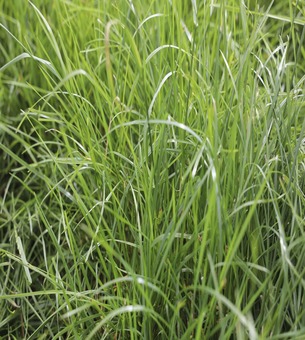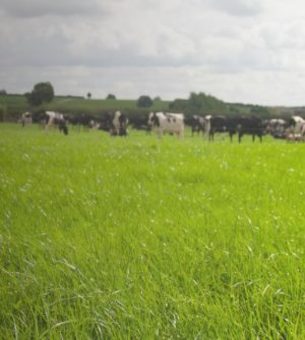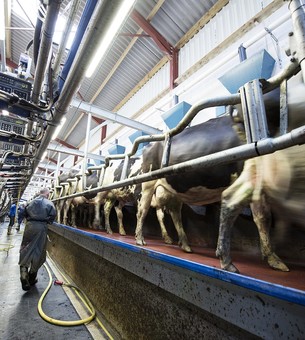Brassicas provide a great option for extending autumn grazing and supporting out-wintering systems. This helps limit reliance on bought-in feed, reduces labour, machinery and housing costs over winter and cuts the need for winter conserved forage.
Kale is a popular, winter-hardy brassica which can be grazed right through from November to February. Maris Kestrel Kale is particularly high-yielding at 10-12t DM/ha, with a protein level of 16-18% and ME value of 12-13 MJ/kg DM, making it energy rich. Its outstanding digestibility and high leaf-to-stem ratio allow the whole plant to be utilised. Maris Kestrel kale’s leaf to stem ratio is particularly high because it’s shorter and leafier than other varieties, which also makes it more resistant to lodging.
Planning
Kale is valuable in a rotational policy, and now is the time to plan its use within an overall feed strategy. As with all brassicas, good establishment and management help you gain the most from the crop.
Kale can be sown in May or June to be ready for grazing in October/November.
Site selection and preparation
Ground used for any brassicas shouldn’t be too steep, and must be free-draining and fertile, no threat to watercourses and have trees or hedges available to shelter livestock. To avoid the risk of clubroot, land should not have been sown with brassicas for at least five years.
Soil test land at least eight weeks before planting. Optimum pH levels for good growth are 6.0-6.7, with P and K indices of three. If soil tests highlight deficiencies, lime and fertiliser must be applied to redress problem areas.
“P is needed for root development, K for the leaf, so kale has a higher K requirement,” explains Diarmuid Murphy, Germinal’s Technical Sales Manager. “When and how much K is needed also depends on when it’s being used, ie. September or November, and therefore how long it’s growing.”
Crop establishment
Before sowing, spray off the old sward with glyphosate at the correct rate and water volume for a good kill. Once removed, apply fertiliser. Three bags of 10:10:20 per acre is recommended with another two bags top-dressed 4-6 weeks after sowing. Also, apply lime before sowing to reduce acidity from the trash die-off and achieve the correct pH level.
“Fertiliser applied at the time of sowing helps it come out of the ground quicker - well sown is half grown,” says Diarmuid. “It’s fine to use farm manure, but it takes a while to release and become available, particularly if ploughed down into the ground.”
Good seed-to-soil contact is essential for successful germination, so conventional cultivation and rolling to create a firm, clean seedbed is used most often. But kale can be direct drilled or broadcast. Sow seed at around 10mm depth whichever method is chosen.
The aim is to produce an even, dense crop of leafy kale, so seeding rates need to be kept quite high at 2.5 – 3 kg/acre; 3.5-4.0kg/acre if broadcast.
Early management
The first six weeks of a brassica crop is the most critical. Monitor closely for weed ingress, disease and pest damage. Brassicas are particularly prone to sulphur deficiency, indicated by yellowing leaves.
As outlined above, the bulk of fertiliser for winter brassicas goes into the seedbed, but nitrogen application rates depend on the sowing date. Kale is more responsive to N inputs once leaves are growing so divide N applications, with roughly half applied into the seedbed and the other half as a top dressing four to six weeks after sowing.
Related Content
Plan your reseed now to
maximise grass performance
2021
Pasture Profit Index
Once-a-day milking to
reduce spring labour



